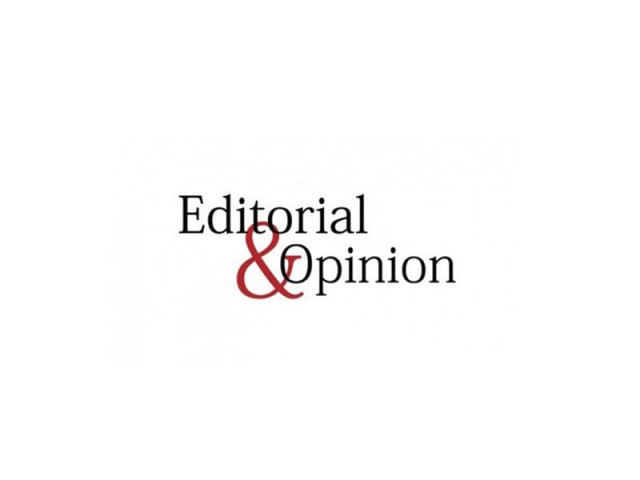The Iceland plan for monetary reform
It offers possibility of dramatic increase in real investment & real growth that is very much needed today in Pakistan

The writer is vice-chancellor of the Pakistan Institute of Development Economics
Banking is another institution that has been copied without a cost-benefit analysis. The Great Depression of 1929 was caused by a banking crisis which wiped out lifetime earnings and led to prolonged misery for millions. Stringent banking regulations prevented major crises for 50 years. Financial liberalisation in the 1980s led to the savings and loan crisis; the bailout was more than the profits of banks for the entire century. Since the 1980s, financial deregulation has been extended and globalised, resulting in more than 200 banking crises globally, with huge economic costs. The latest and greatest is the global financial crisis (GFC) of 2008, which cost trillions of dollars and led to the highest levels of homelessness and hunger seen in the US since the Second World War. Overall, the harm to society from the banking system has been far greater than the benefits.
Many have analysed the reasons for repeated banking crises and found that the root cause is the fractional reserve banking system. In this system, banks holding a billion rupees can freely create a large multiple — like five or 10 billion rupees — from nowhere. They only need to have a small fraction of the money that they create to give to lenders. The inherent injustice of a system which allows certain wealthy private parties to create money at will is hidden from public view. Henry Ford said, “It is well enough that people of the nation do not understand our banking and monetary system, for if they did, I believe there would be a revolution before tomorrow morning.” An inherent feature of the system is that the claims on banks are far greater than their assets. When too many depositors wish to withdraw money, there is bound to be a crisis. In the words of Lord Mervyn King, the former governor of the Bank of England, “Of all the many ways of organising banking, the worst is the one we have today — change is, I believe, inevitable. The question is only whether we can think our way through to a better outcome before the next generation is damaged by future and bigger crises.”
The excellent documentary “Inside Job” shows that Iceland was badly mauled in the GFC of 2008. Financial deregulation crashed a small, stable and robust economy due to wild and excessive lending. Iceland bankers, utilising their powers of money creation, expanded the money supply by a factor of 20 over the decade leading up to the GFC of 2008. The bloated money supply led to soaring prices of stocks and lands, and ultimately crashed the economy. The Central Bank of Iceland found that contrary to what is written in monetary theory textbooks, it was completely unable to control the money supply. It utilised all tools at its disposal, including raising the discount rates to extremely high levels, but could not prevent private banks from creating excessive money.
Chastened by the experience of helplessness, watching an impending crisis without being able to do anything about it, the Iceland government has recently formulated a plan for monetary reform. The key ingredient of the plan is that the power to create money is taken away from private banks. The proposed system of sovereign money puts the power of money creation in the hands of a panel of specialists at the Central Bank. They will use economic theory to create money in quantities which would allow for full employment without creating inflation. Specialists can download and read the Iceland proposal for monetary reform, full of fascinating details and information about the defects of our current banking system. The question of why only Iceland when this reform is needed everywhere was addressed briefly in my previous article, “The Shifting Battleground” (May 10). A much more detailed historical explanation of the power and craftiness of the financial lobby is given in the writings of Ellen Brown.
The main problems of the current banking system are that it is unjust, crisis-prone and anti-growth. Private money creation leads to a rentier economy, where the largest profits are made by owners of wealth, who invest in stocks and land and earn interest on bonds. The producers, workers and farmers who make up the real economy get very little reward for their labours. Instead, rewards accrue to the financiers who provide money — created from nothing — to all the real sectors. Not only is this unjust, but it causes growth prospects to shrivel since all investment is directed towards financial sectors and away from the productive sectors. Studies show that growth of GDP is very strongly correlated with the amount of investment in the real sector and in human beings. This is only natural; growth is directly tied to how much we invest in our future. Although it is radical, the Iceland plan for monetary reform offers the possibility of a dramatic increase in real investment and real growth that is very much needed today in Pakistan.
The Express Tribune, May 25th, 2015.
Like Opinion & Editorial on Facebook, follow @ETOpEd on Twitter to receive all updates on all our daily pieces.















COMMENTS
Comments are moderated and generally will be posted if they are on-topic and not abusive.
For more information, please see our Comments FAQ